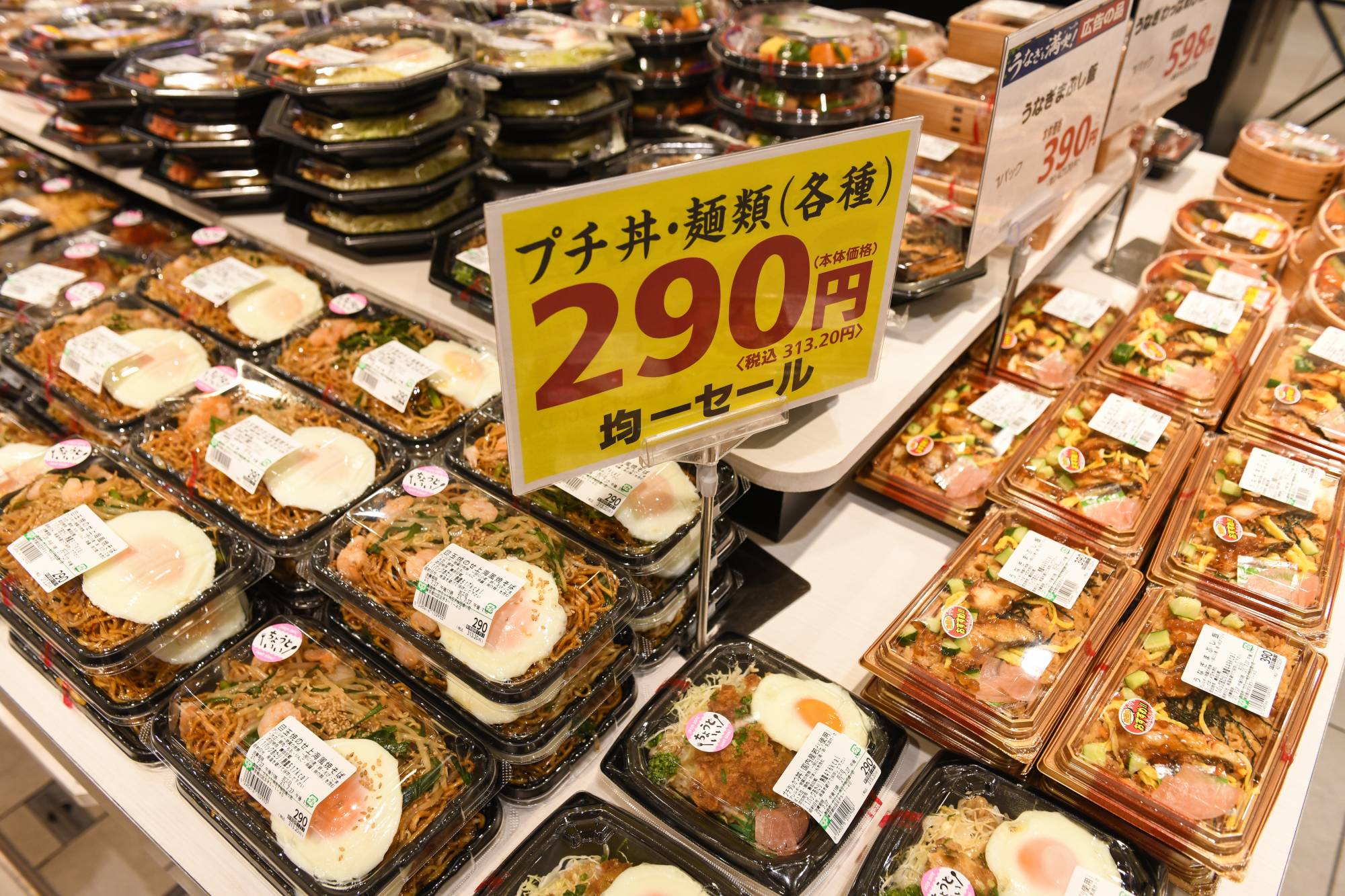Japan’s economy might be restructured as a result of inflation.
Due to its historically low inflation, the Japan’s economy stands out among the G7 nations. In Japan, prices climbed by only 6% between 1992 and 2021 compared to almost 90% in the US and nearly 80% in the UK. This situation has not changed as of yet despite the most recent worldwide inflation spike. While several nations have lately seen year-over-year inflation rates that are close to 10%, Japanese inflation has increased substantially less, from 0.1% per year in October 2021 to 2.6% per year in 2022.
In particular, the food and energy crises that followed Russia’s invasion of Ukraine and the impact of supply chain bottlenecks as the world economy recovered from the COVID-19 epidemic, Japan has experienced the same external inflationary pressures as other major countries. The impact on inflation in Japan has, so far, been less severe than elsewhere for two reasons. First off, Japan has a variety of economic and political measures in place that tend to restrain price swings, while under normal circumstances they can also jeopardize economic efficiency.
Utility providers adjust to this in part by entering into long-term contracts for the supply of gas and coal, thus paying a premium for price stability. Government regulations mean that electricity and gas rates may only be changed gradually. Since late January, gasoline prices have also been subsidized to counteract price increases. Similar to other countries, Japan has originally been less affected by the rise in global wheat prices connected to Russia’s invasion of Ukraine than other countries since wheat is mostly imported by a governmental organization that sets the resale price for six months at a time.
Approximately 85% of the wheat eaten in Japan is produced in the US, Canada, and Australia. Japanese customers were given a subsidy on bread and noodles in June since the import price was higher than the resale price, which is presently set until September. Furthermore, the Japanese prime minister opted to freeze the resale price, although the new wheat resale price was anticipated to rise by 20% from October 2022 to March 2023.
Given the recent decline in wheat prices, it is uncertain how much this decision will cost the government, but given future market swings, there is a chance that it may result in a sizable “bread and noodle subsidy.” Second, compared to other G7 nations, Japan’s overall economic recovery from the COVID-19 epidemic has been slower, with limitations on the economic activity being eased at a slower pace. Postponing the post-pandemic rise in demand that many other nations have seen, has also assisted in containing inflation.
These elements have helped to reduce the political impact of inflation in Japan thus far. The “cost of living” was a new important issue in the House of Councillors election on July 10, although it did not fundamentally alter the outcome. As a result, rather than providing one large payment to every home, the government has been able to continue using an “item-specific” strategy to address the situation. There is no clear end in sight to the crisis in Ukraine, and the change from almost zero inflation to considerable and prolonged inflation is likely to continue. In this situation, at least three segments of the Japanese economy might see long-term structural changes.
Inversion of power in the labor market
The Japanese economy has been firmly rooted in the premise of essentially low inflation for the previous three decades. Pay increases based on inflation were extremely uncommon. Although prices occasionally fell at this time, labor unions were still mostly satisfied because it is nearly difficult to reduce permanent employees’ pay without declaring bankruptcy for the company. As a result, the unions seldom needed to use coercive measures to gain wage stability or even raises.
In contrast, if inflation remains positive for an extended period, employers will have more flexibility in tying real pay increases for permanent employees to productivity levels, and labor unions will have to put forth more effort to keep up with inflation-driven wage increases, especially in the weaker-performing economic sectors.
This in turn can lessen the benefit of permanent work over non-permanent employment from the employee’s point of view. Additionally, it will compel labor unions to focus more on the compromises made between ensuring long-term job preservation and providing genuine wage increases.
A revised explanation for the exchange rate
In most nations, there are usually a variety of opinions on the advantages and disadvantages of any particular increase in the domestic currency. Some commentators emphasize the advantages of domestic purchasing power and inflation reduction, while others concentrate on decreased industry international competitiveness. In Japan, on the other hand, currency appreciation has typically been seen unfavorably, which reflects the crucial role that exports play in fostering prosperity. Even when big Japanese corporations dispersed their manufacturing facilities worldwide, this persisted.
Although net exports have not increased, the Japanese Yen has declined in value with rising inflation throughout the present crisis, adding to the strain on living standards. It could cause the general public’s viewpoints to change in favor of a more impartial view on currency appreciation.
Accelerated decarbonization action
Similar to other major economies, Japan’s early reaction to the Ukraine crisis included fossil fuel subsidies, which harmed efforts to combat climate change. The effect over the longer run, though, may be extremely different. Since the Fukushima nuclear catastrophe in 2011, several of Japan’s nuclear reactors have remained idle, bringing the country’s nuclear contribution of electricity output down from 25% in 2010 to only 6% by 2021.
The public’s trauma caused by the nuclear catastrophe may, however, be sufficiently overpowered by the combined effects of the cost of living crisis and the urgent need to decarbonize the economy, leading to the restart of more nuclear reactors. There may, after all, be a silver lining to the country’s present inflation increase since all three of these elements would be generally favorable for the long-term functioning of the Japanese economy.
Japan’s economy blows its post-bubble due to its currency.
The Japanese yen has dropped to a 24-year low, trading at more than 145 yen to the dollar. After the Bank of Japan (BoJ) indicated that additional depreciation would be permitted, Finance Minister Shunichi Suzuki warned that “excessive, chaotic currency swings might badly damage the economy and financial circumstances.” The huge foreign exchange intervention that followed to support the yen was unsuccessful in halting the pressure on devaluation. That could be a hint that Japan’s post-bubble crisis response has run its course.
The implosion of the Japanese bubble economy in December 1989, which was brought on by the Bank of Japan’s abrupt interest rate reduction in reaction to the post-Plaza yen appreciation, is where the present policy conundrum’s origins may be found in Japanese authorities have been working to alleviate the country’s lingering post-bubble recession since the early 1990s through a protracted succession of public spending initiatives supported by the BoJ’s acquisition of government bonds. With the implementation of Abenomics, former Prime Minister Shinzo Abe advanced this strategy in 2013. The Abenomics strategy increased the balance sheet of the BoJ and increased general government debt to almost 260% of GDP.
The BoJ’s substantial government bond purchases allowed the Japanese government to subsidize businesses, commodities, and services for a considerable period, which was accompanied by low inflation. The price level was kept from growing thanks to subsidies for food, transportation, and education as well as the ever-falling costs of financing for businesses. Zombie businesses were developed as a result of the generous funding allocation, which expanded their capital rather than making investments in greater efficiency.
Because of the consequent low productivity growth and low inflation, nominal pay increases were constrained. Current account surpluses were financed by ongoing net capital outflows as the BoJ maintained long-term interest rates at a significant discount to those in the US.
Since foreign assets may be changed into yen at any moment, the ensuing accumulation of sizable net foreign assets denominated in dollars—equivalent to US$3.6 trillion—implied continuous appreciation expectations on the yen. The yen did not face constant devaluation pressure since the United States adopted a comparable monetary expansion. Because the US Federal Reserve is currently sharply raising interest rates, the situation has altered.
Consumer price inflation, which is expected to hit 8.3 percent in August 2022, has become a major political issue for US President Joe Biden. Large nations like China and Russia have tried to de-dollarize their overseas assets due to growing unease over the US dollar’s volatility as the world’s reserve currency. People in poor nations are increasingly holding bitcoin instead of money.
The extravagant right of the United States to issue international debt in its currency is in jeopardy, just like it was after the high-inflation period of the 1970s. This signals the conclusion of Japan’s post-bubble paradigm of macroeconomic stabilization, which peaked under Abenomics and was intended to continue under the New Capitalism of Japanese Prime Minister Fumio Kishida. The yen will continue to decline if the BoJ maintains low-interest rates while the US Federal Reserve raises rates. Imported products’ rising costs, notably those of raw materials, gasoline, and food, will further reduce consumers’ purchasing power.
The past pay austerity might be followed by a price-wage spiral if trade unions demand greater salaries. If the government keeps using subsidies to mask inflation, the vicious cycle of increasing government debt and monetary expansion would quicken, further undermining the value of the yen. Since significant trading partners like South Korea have adopted Washington’s interest rate strategy, these worries are now more valid.
If the BoJ increases interest rates to stem the yen depreciation, the government’s borrowing expenditure would rise. Throughout three decades of rising public debt, the BoJ maintained low government interest payments by bringing down the interest rate on government bonds to almost zero. In 2022, the interest rate on 10-year US government bonds rose from 1.6% to 3.8%, while the BoJ kept the interest rate on 10-year Japanese government bonds at 0.24%. If rates increased, a crisis in national debt would be imminent, with debt almost quadrupling that of the Washington General Government.
Japan is trapped unless the US Fed abruptly reverses its tightening of monetary policy. To get out, there would need to be steady hikes in interest rates and significant reductions in government spending. That would revive Japan’s dead businesses and encourage development.
The fact that the firms are sitting on substantial equity hoards would make the changes easier. Foreign asset repatriation could encourage more domestic investment. Despite this upbeat prognosis, the required reforms appear to be political suicide. Before Japan can make the required changes, it might first need to endure a prolonged period of inflation to reduce an enormous load of government debt.
edited and proofread by nikita sharma




